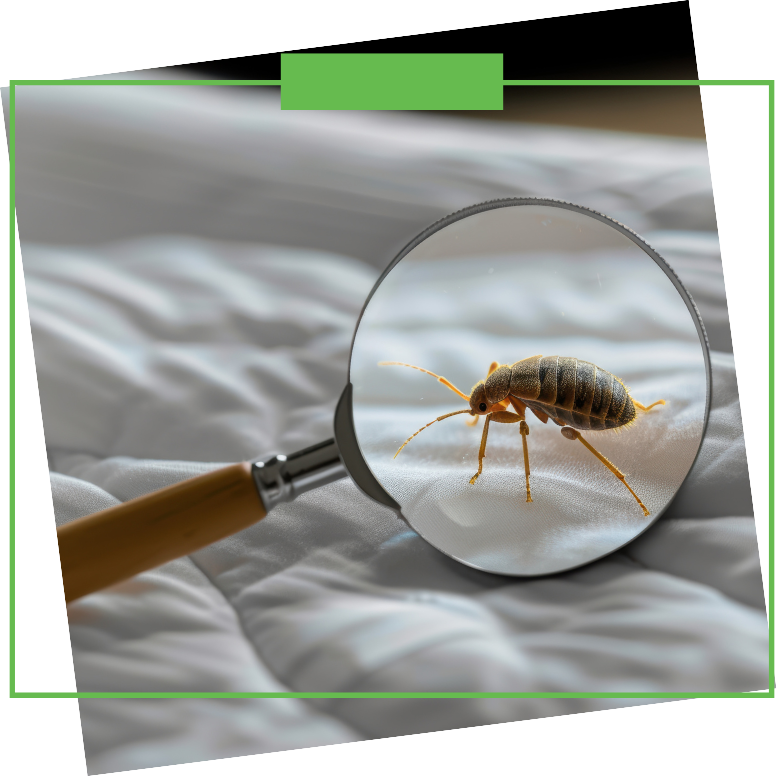Bed bugs are a problem most people hope they’ll never encounter—and yet, they’re becoming more common in both homes and businesses across the country. These tiny insects are masters at hiding, making them difficult to detect until the infestation has already taken hold. While their bites aren’t known to transmit disease, they can cause significant discomfort, sleepless nights, and serious reputational damage if found in commercial spaces like hotels, offices, or rental properties. What makes them especially frustrating is how easily they spread, hitching rides on luggage, clothing, or used furniture without anyone noticing.
Contrary to popular belief, bed bugs don’t indicate a dirty home or business. They’re equal-opportunity pests, and once they find a way inside, they get to work fast. Their ability to survive for extended periods without feeding makes getting rid of them particularly tricky. Standard cleaning methods, over-the-counter sprays, and DIY traps don’t usually cut it. If a few bugs are missed, the infestation tends to come right back—and often worse than before.
How Bed Bugs Spread And Thrive
Understanding how bed bugs spread is key to controlling them. These pests are experts at slipping into small cracks and crevices, making their homes in mattresses, headboards, baseboards, and even behind electrical outlets. They tend to stay out of sight during the day and become active at night, attracted by the carbon dioxide people exhale while sleeping. That’s when they come out to feed, usually leaving behind itchy, red welts that many people mistake for other insect bites.
What makes them especially troublesome in commercial settings is their ability to travel from one room to another. In apartment buildings, hotels, or offices, bed bugs can move between units through walls, plumbing, or shared furniture. All it takes is one infested suitcase or briefcase to create a widespread problem. In residential homes, they can spread quickly through bedrooms and living areas, especially if someone unknowingly carries them from a hotel stay or public transit.
Once they establish themselves, bed bugs reproduce quickly. A single female can lay hundreds of eggs in her lifetime, and the eggs are so small they’re nearly impossible to see with the naked eye. Within a few weeks, a small infestation can explode into a major one, and by then, over-the-counter treatments are no match for the scale of the problem.
Challenges Of Detecting And Eliminating Bed Bugs
One of the biggest frustrations with bed bugs is just how hard they are to find. People may notice bites or blood spots on sheets, but it’s not always clear where they’re coming from. Bed bugs can go unnoticed for weeks or even months, especially if the infestation starts small. Business owners might not find out until a guest or tenant complains, and by then, the damage to their reputation may already be done.
Once a bed bug infestation is suspected, confirming it can be a challenge. These pests hide deep in furniture seams, wall cracks, and tiny spaces that are easy to overlook. On top of that, they’re nocturnal, so they tend to stay out of sight unless the lights are off and people are still. Missing even a handful of them during treatment can lead to reinfestation, which is why professional inspections and treatments are so important.
Treating bed bugs effectively requires a combination of precision, knowledge, and the right tools. Heat treatments, targeted applications, and follow-up inspections all play a role in making sure the bugs are truly gone. That’s especially important in settings like hotels or apartment complexes, where the risk of cross-contamination is higher. The goal isn’t just to kill the bugs that are visible, but to eliminate the entire infestation—eggs and all—before it can rebuild.
Professional Help Is Key
Trying to handle a bed bug infestation without professional support can be frustrating, expensive, and usually ineffective. Store-bought sprays and home remedies may seem like a quick fix, but they often do little more than scatter the problem or drive it deeper into walls and furniture. Worse, improper treatment can make the situation harder to resolve later on, especially if the pests are allowed to spread into additional rooms or neighboring units.
For both homeowners and business operators, early intervention makes all the difference. A licensed pest control professional can identify the signs of infestation quickly, locate hiding spots most people miss, and develop a treatment plan that’s tailored to the space and level of infestation. From single-family homes to large commercial buildings, effective bed bug control isn’t a one-size-fits-all solution. It requires experience, proper equipment, and a strategy that includes both eradication and prevention.
Whether you're dealing with a confirmed infestation or just suspect the early signs, getting ahead of the issue can save you time, stress, and future expense. The longer bed bugs are allowed to settle in, the more challenging they become to remove.
If you're noticing unexplained bites, strange odors, or signs of bug activity around your bed or furniture, it's worth taking seriously. Bed bugs don’t go away on their own, and delaying action usually leads to more trouble down the line. Whether you're a homeowner trying to protect your family or a business owner responsible for your guests and reputation, the smartest move is to reach out to professionals who know how to handle these pests thoroughly.
Our team provides thorough, professional bed bug treatments for both residential and commercial properties. If you suspect a problem or just want more information on how to prevent one, contact Ideal Pest Control today to schedule an inspection or speak with a pest specialist who can guide you through your next steps.
Frequently Asked Questions About Bed Bugs
Q1. Can bed bugs live in electronics or appliances?
A1. Surprisingly, yes—bed bugs are experts at hiding in tight spaces, and they’ve been known to squeeze into electronics like alarm clocks, gaming consoles, and even behind outlet covers. While they don’t feed or nest in these devices, they may use them as temporary harborage when an infestation is widespread. If you're dealing with recurring bites but can't find bed bugs in the usual spots, it's worth considering these less obvious hiding places.
Q2. Do bed bugs only come out at night?
A2. Bed bugs are nocturnal by nature, but they’re opportunistic pests. While they prefer to feed while you’re asleep—typically between 2 and 5 AM—they’ll adjust their schedule if you work night shifts or sleep during the day. It’s not about the time of day—it’s about when you’re at rest. That adaptability makes them especially tricky to detect and eliminate without expert help.
Q3. Will getting rid of my mattress solve the bed bug problem?
A3. Tossing your mattress might feel like the fastest solution, but unfortunately, it won’t fix the issue. Bed bugs often hide in nearby furniture, baseboards, wall cracks, and carpeting—places that remain even after the mattress is gone. In fact, removing the mattress can scatter the infestation further. The most effective way to handle bed bugs is through thorough, targeted treatment that addresses every potential hiding spot in your home.



